
Class Asteroidea
Order Forcipulatida
Family Asteriidae
PURPLE STAR
Pisaster ochraceus (Brandt, 1835)
Identification:
5 stiff arms with arched disc. Aboral surface very rough, with spiny ridges. Purple, ochre or brown. To 60 cm (24 in) across.
Range:
Prince William Sound, Alaska to Baja California; intertidal to 97 m (320 ft).

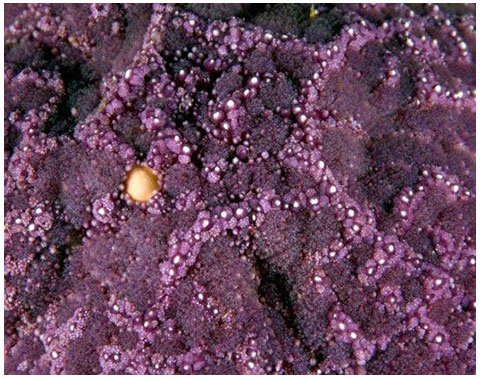
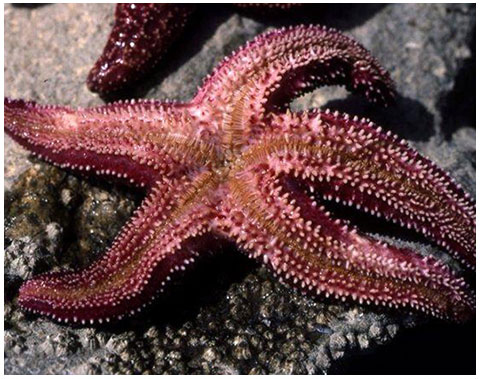
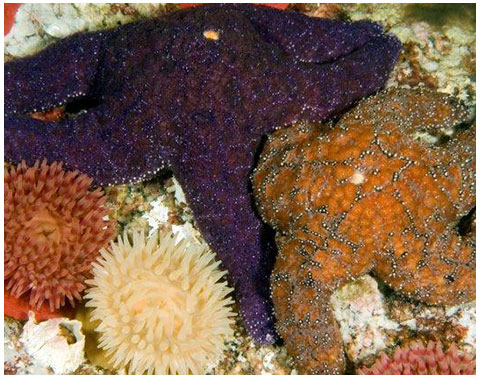

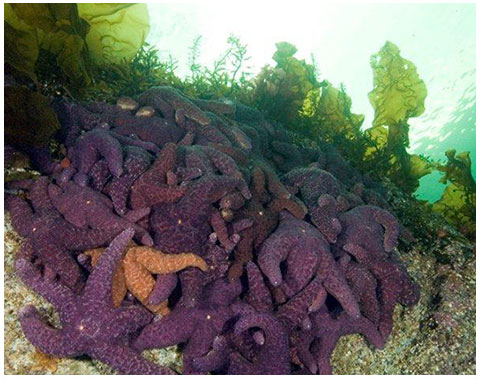
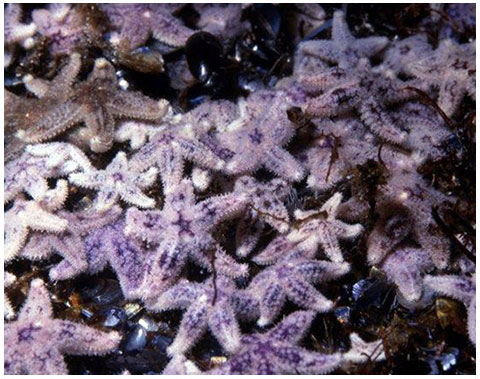
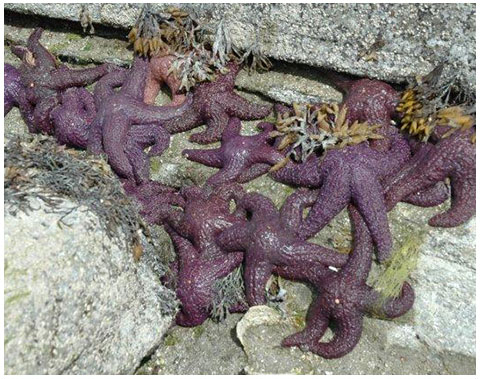

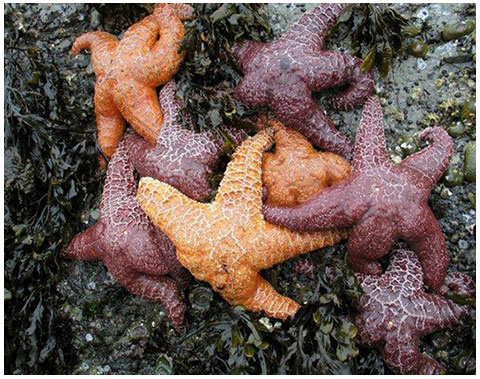

A pair of PURPLE STARS in the shallows of Jervis Inlet, BC. Note the stiff arms and purple colour marked by blunt white spines.
A close-up view of the aboral surface. Note the yellow madreporite to left of centre, the ridges of spines surrounded by tiny pincers and the densely-packed gills.
The oral surface showing the tube-foot grooves and the central mouth.
In current-swept Sechelt Rapids, BC, both the purple and ochre forms are found in large numbers, feeding mostly on barnacles and mussels.
This ochre specimen from the west coast of Vancouver Island has very prominent white spines.
During the winter, PURPLE STARS often aggregate in the shallows, especially in Jervis Inlet, BC. These congregations may serve to improve reproductive success when they spawn in the spring.
In the fall, juvenile PURPLE STARS can sometimes be found in huge numbers. These youngsters are less than 2 cm (0.8 in) across. Note that there are a few juvenile MOTTLED STARS in the upper left of the frame.
Low tide on a hot summer day in the Gulf Islands, BC. These PURPLE STARS avoid overheating by aggregating in damp crevices and by conserving water inside their bodies. It slowly evaporates from the skin, keeping the stars cool.
Author/photographer Rick Harbo displays a hefty PURPLE STAR. This monster from the Crane Islets, Queen Charlotte Strait, is the biggest we have ever encountered. It measured 60 cm (24 in) in diameter.
A cluster intertidal specimens on the west coast of Vancouver Island. In these exposed habitats ochre and brown specimens are much more common, whereas purple specimens dominate in the protected waters of the Strait of Georgia and Puget Sound. (Cathryn McDaniel photo)
This specimen was flipped over to reveal its prey, a large California mussel covered with barnacles.
1 - 11
Previous
NEXT
Notes:
This is the most conspicuous star in the PNW intertidal. It feeds on mussels, barnacles, snails and limpets. It is well adapted to desiccation, but usually retreats to damp crevices to avoid exposure when the tide is out. Specimens from sheltered waters are generally purple but those found on exposed coasts are more often ochre or brown. This is believed to be due to the different types of food they eat.
This species is often host to an internal parasite that infests the male gonad and stops sperm production. The parasite was first observed here in 1988 and was previously endemic to the North Atlantic.
INTRODUCTION | ABOUT SEA STARS | BIOLOGY | SPECIES | PREDATORS / PREY | SEA STAR WASTING DISEASE | ACKNOWLEDGEMENTS | FIELD GUIDE | VIDEO
Copyright © 2018 All rights reserved.